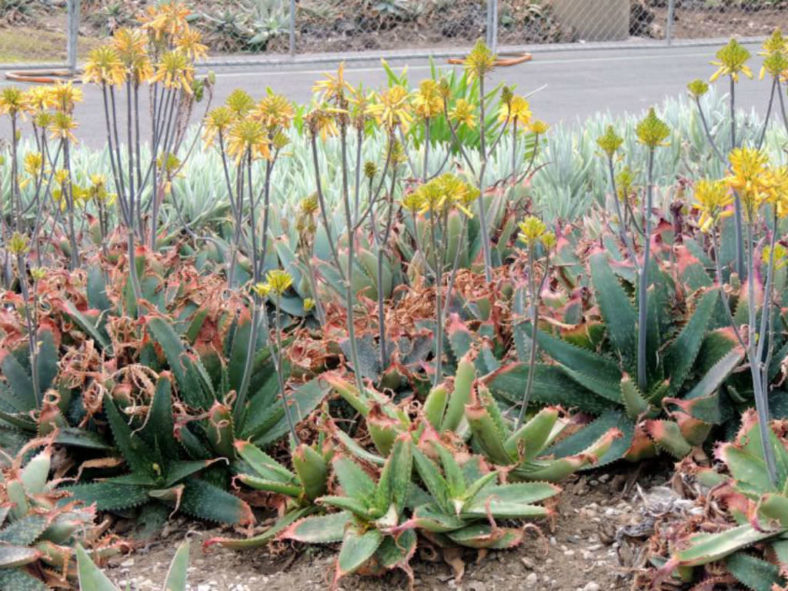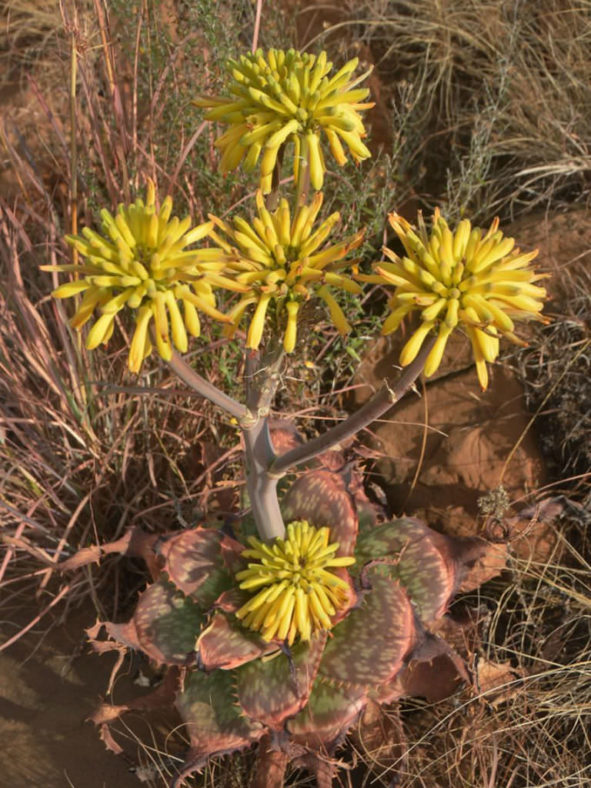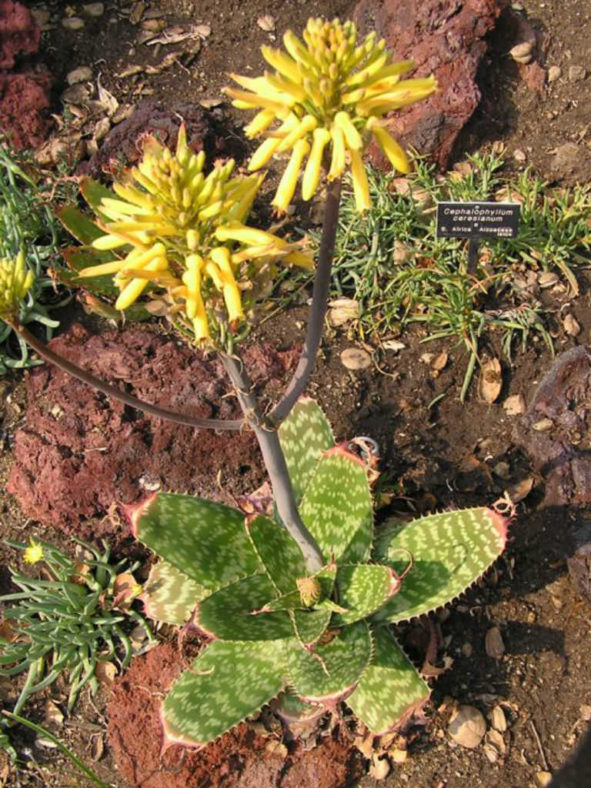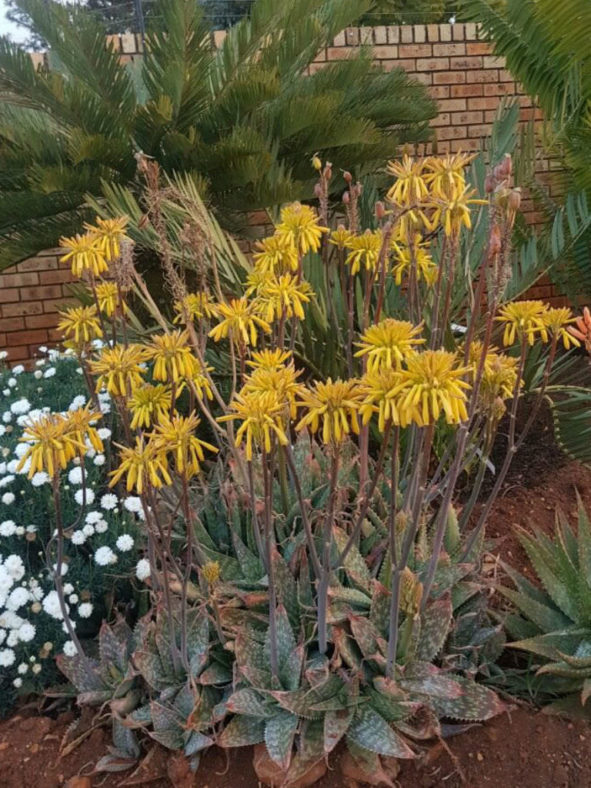Scientific Name
Aloe maculata 'Yellow Form'
Accepted Scientific Name
Aloe maculata All.
Common Name(s)
Yellow Soap Aloe
Synonym(s)
Aloe saponaria 'Yellow Form'
Scientific Classification
Family: Asphodelaceae
Subfamily: Asphodeloideae
Genus: Aloe
Origin
Aloe maculata 'Yellow Form' is a form of Aloe maculata with yellow flowers.
Description
Aloe maculata 'Yellow Form' is a stemless succulent that forms rosettes of dark green leaves with a reddish tinge at the tips. It may grow as a solitary plant or produce offsets to form dense expanding colonies. The rosettes can grow up to 18 inches (45 cm) tall and 2 feet (60 cm) in diameter. The lower part of the leaves fades to a light green and is marked by faint white lines. The margins are lined with brown teeth.
This form has the same characteristics and cultural notes as the species, except for the flower color.

Hardiness
USDA hardiness zones 8b to 11b: from 15 °F (−9.4 °C) to 50 °F (+10 °C).
How to Grow and Care
Aloes are very forgiving plants. However, as with all succulents, Aloe must never be allowed to sit in stagnant water, and the plant should be carefully monitored to watch for signs of overwatering.
These succulents are not particularly fast-growing and will only rarely need repotting. However, in the spring, repot Aloes tipping over their pots or have ceased growing. Use a fast-draining potting mix with one-third sand or pebbles. When repotting a larger plant, dividing the root ball is possible. Some varieties of Aloe will send off offsets that can be potted independently.
Aloe plants need strong, bright light. They can withstand full summer sun once they acclimate. In the winter, provide bright light. It prefers warmer temperatures of 70 to 80 °F (21 to 27 °C) but will survive down to 40 °F (4.5 °C. Feed with a succulent fertilizer in the summer only. Suspend feeding in the winter as the plant goes dormant.
Learn more at How to Grow and Care for Aloe.
Links
- Back to genus Aloe
- Succupedia: Browse succulents by Scientific Name, Common Name, Genus, Family, USDA Hardiness Zone, Origin, or cacti by Genus
Photo Gallery
Click on a photo to see a larger version.



